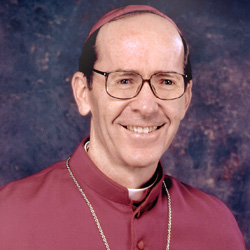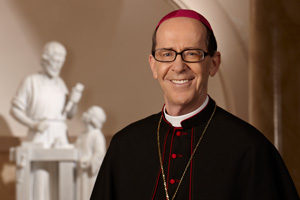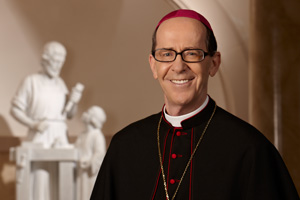The first-ever national awareness campaign inviting Catholics to return to the faith launches Dec. 16 in 10,000 cities across the United States. The prime-time, network television campaign hopes to inspire 1 million Catholics to rejoin their parishes.
The 30-second spot produced by Virtue Media, Inc. was filmed largely in the Diocese of Phoenix but also includes scenes from Rome and around the world. Tom Peterson, president and founder of Virtue Media and Catholics Come Home, Inc., said he and his team, along with thousands of donors, have been praying for a nationwide campaign to take place for years.
“There’s great joy in bringing this message to all 200 dioceses, all the many thousands of parishes and 250 million viewers who will soon see the good news about the history, beauty, spirituality and accomplishments of the Catholic Church that Jesus Himself founded 2,000 years ago,” Peterson said.
Ryan Hanning, coordinator of adult evangelization for the Diocese of Phoenix, first began working with Peterson in 2007 and helped develop the catechetical content of the program. He also worked with parishes in their outreach to fallen-away Catholics.
The 2008 Catholics Come Home Campaign was a “huge success,” Hanning said. Since then, the campaign has run in 30 other dioceses across the country, encouraging 300,000 Catholics to return to the Church. Mass attendance increases 10 percent in areas where the spots have run.
Hanning pointed to statistics from the Pew Forum for Religious and Public Life, 2008, that indicate most people who leave the Catholic Church simply drift away.
“It’s very important to note that 90 percent of Catholics who have left the faith — that’s 29 million inactive Catholics in the United States — have left for non-doctrinal reasons,” Hanning said. “Most of them aren’t angry with the faith. They haven’t left over any particular teaching of the faith — they simply don’t know the faith and haven’t had an opportunity to fall back in love with Christ or experience Christ’s love in the Church.”
Those who have fallen away, Hanning said, “are just waiting to be invited back, yet most active Catholics are afraid of sharing the faith because they have the impression most people have left for good reasons.
“But that’s just simply not the case,” Hanning said. “The vast majority of them have left the faith because they’ve been caught up in a culture that doesn’t respect the role of religion.” The Catholics Come Home campaign not only invites people to return to the Church, it also motivates active Catholics to share the faith.
The Catholics Come Home spots, which will air more than 400 times during a three-week period, will be shown on a broad range of stations during popular programming such as 60 Minutes, Jay Leno, The O’Reilly Factor, major sports and highly rated sitcoms.
“Paul VI said the Church exists to evangelize,” Hanning said. “This commercial campaign is just one way in which we’re able to do that very effectively.”
Viewers from the Diocese of Phoenix may recognize local scenes in the commercial such as Immaculate Heart Parish, St. Mary’s Basilica, St. Francis Xavier Parish, the All Saints Catholic Newman Center, Papago Park and the Phoenix Zoo. Fr. Fred Adamson, vicar general and moderator of the Curia, along with local deacons and members of a youth group, are also featured.
Peterson said the campaign is spreading to other countries such as Australia and Mexico. When the spot first aired in the Archdiocese of Chicago, he said, the impact was felt as far away as Poland.
“Millions of viewers in Poland saw our broadcasts from the Polish channels that were airing in Chicago but that also went worldwide,” Peterson said. “So you can see what started as a prayerful effort of the New Evangelization in the Diocese of Phoenix is going nationwide and has already, to a certain extent, started penetrating the world.”
The spots were also filmed in Spanish and will be aired on Univision. Fr. John Muir, assistant director of the Office of Worship for the Diocese of Phoenix and assistant director at ASU’s Newman Center, appears in the Spanish version.
“It’s an amazing partnership between Phoenix and Catholics Come Home,” Hanning said. “We’re so honored to have been a part of it and participate in it.”







